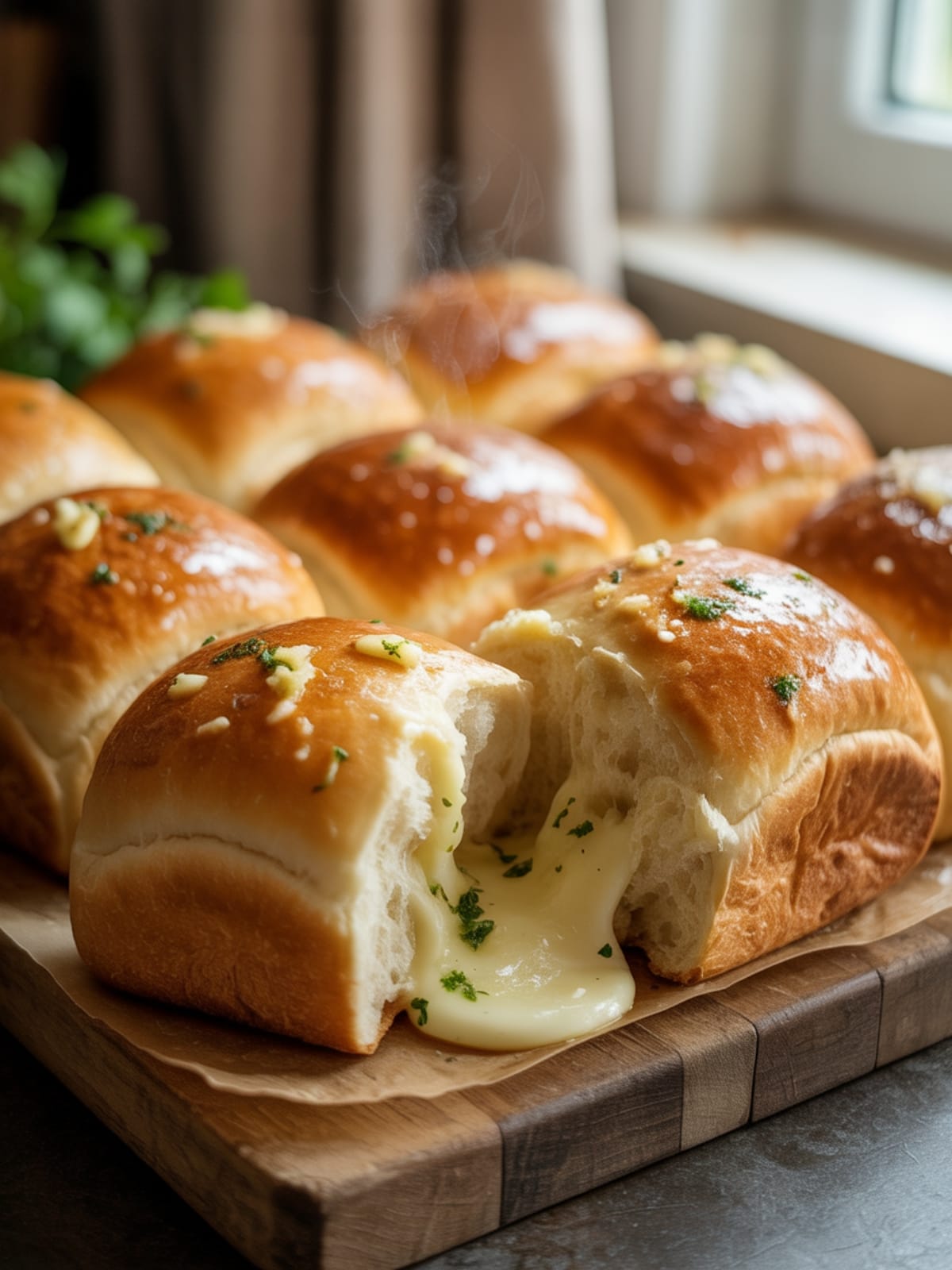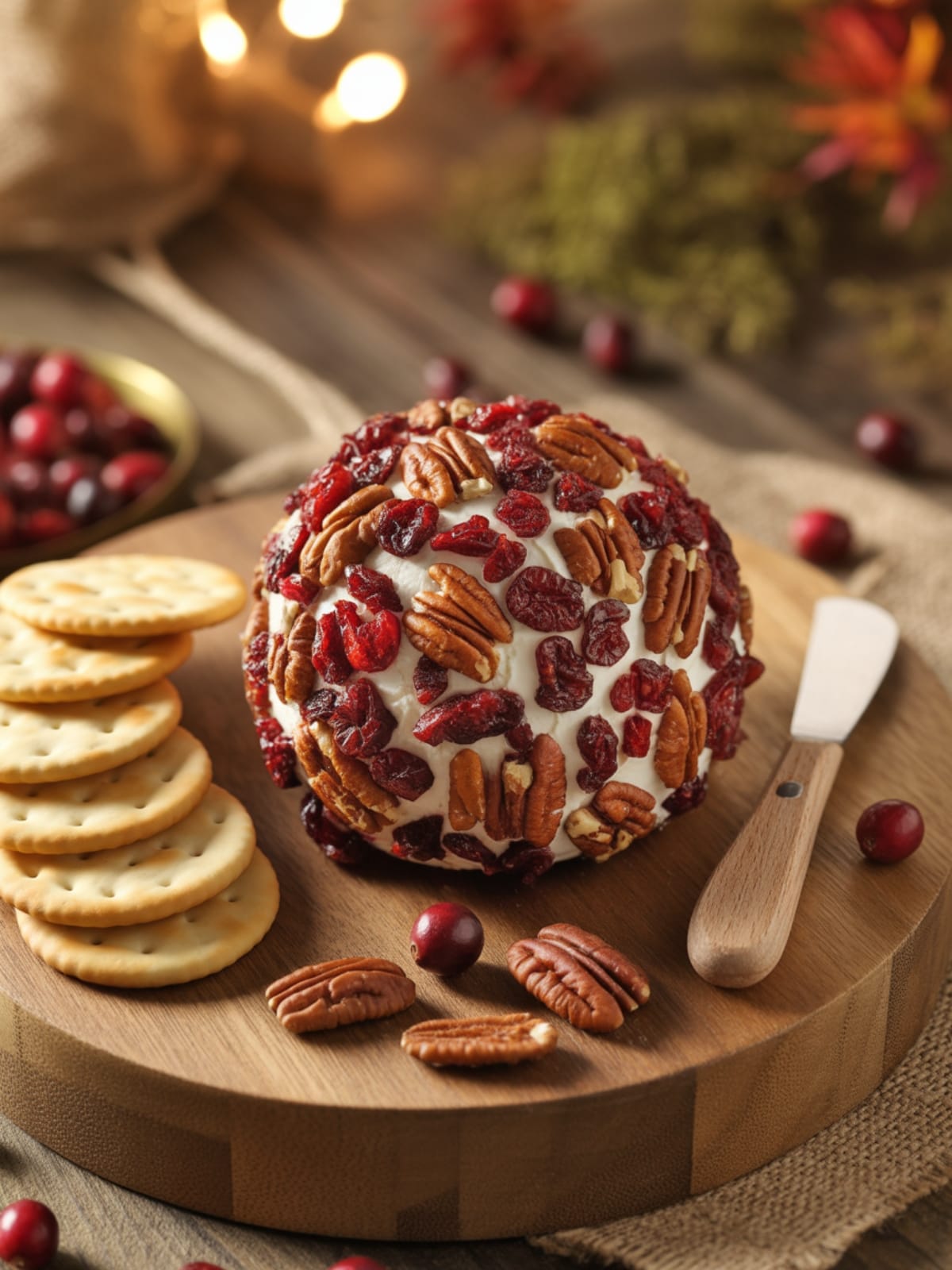When it comes to weeknight dinners that feel like restaurant-quality meals, Baked Teriyaki Salmon consistently tops my list. I still remember the first time I tried this recipe—the kitchen filled with that sweet-savory aroma as the glaze caramelized in the oven. It was one of those perfect cooking moments where minimal effort yielded maximum flavor.
Whether you’re looking to impress dinner guests or simply elevate your family meal, this recipe strikes that perfect balance between everyday accessible and special occasion worthy.
Why This Recipe Is Awesome
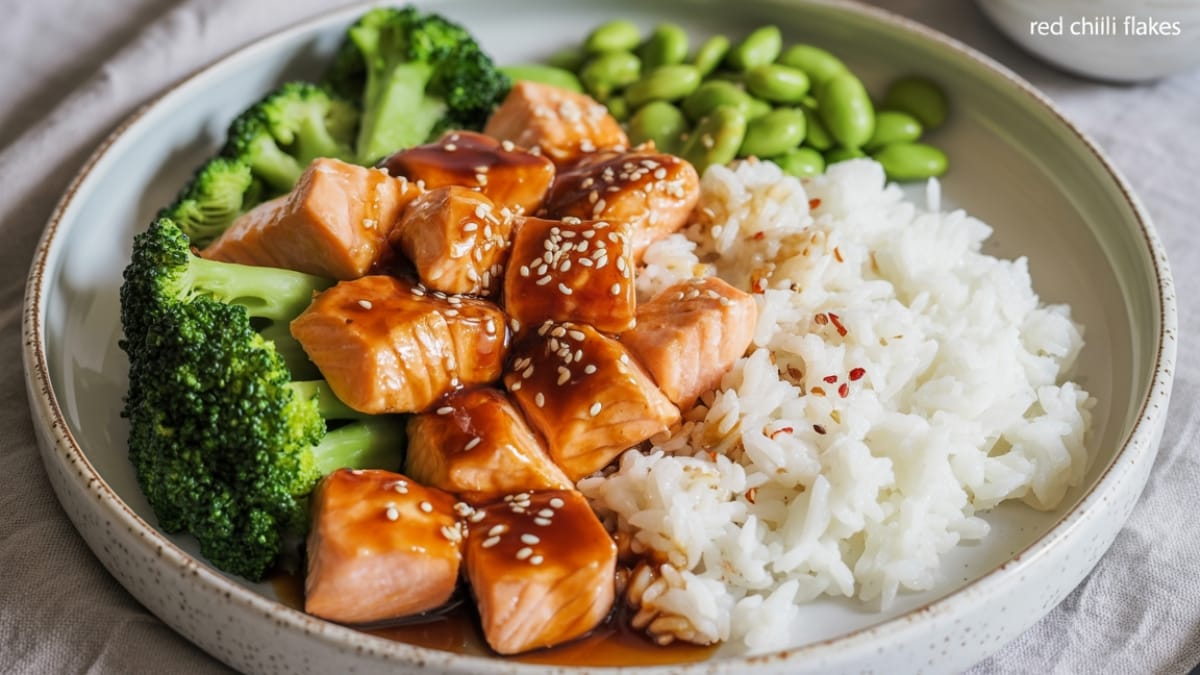
Baked Teriyaki Salmon brilliantly combines simplicity with impressive results. Unlike many teriyaki recipes that require long marinating times, this version creates a gorgeous glaze that caramelizes beautifully in the oven with minimal prep work. The combination of umami-rich soy sauce, the natural sweetness of mirin and brown sugar, and the zingy freshness of ginger creates that distinctive teriyaki flavor that perfectly complements salmon’s rich texture.
What I particularly love is how the sauce reduces during baking, concentrating the flavors and creating that signature glossy finish without the need for constant basting or complicated techniques. It’s also incredibly versatile—pair it with steamed rice and vegetables for a classic approach, or take it in different directions with noodles or a fresh salad. Plus, it’s packed with heart-healthy omega-3s, making it as nutritious as it is delicious.
Equipment needed: Baking dish, small saucepan, whisk, measuring cups, measuring spoons, basting brush
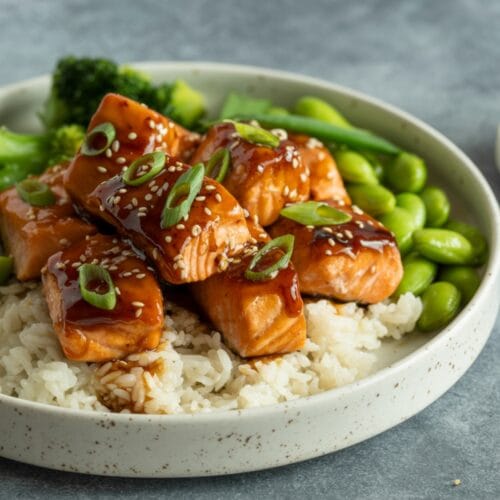
Baked Teriyaki Salmon
Ingredients
- 4 salmon fillets about 6 oz each, skin-on preferred
- 1/2 cup low-sodium soy sauce
- 1/4 cup mirin Japanese sweet rice wine or substitute with 1/4 cup white wine plus 1 tablespoon sugar
- 1/4 cup brown sugar packed
- 2 tablespoons rice vinegar
- 2 cloves garlic minced
- 1 tablespoon fresh ginger grated
- 1 tablespoon cornstarch mixed with 2 tablespoons water slurry
- 2 green onions thinly sliced for garnish
- 1 tablespoon sesame seeds for garnish
- 1/4 teaspoon red pepper flakes optional, for heat
Instructions
- Preheat your oven to 400°F (200°C) and line a baking dish with parchment paper or lightly oil it to prevent sticking.
- Make the teriyaki sauce by combining soy sauce, mirin, brown sugar, rice vinegar, garlic, and ginger in a small saucepan over medium heat. Bring to a simmer and cook for 3-5 minutes until the sugar has completely dissolved.
- Add the cornstarch slurry to the simmering sauce, whisking constantly until the sauce thickens enough to coat the back of a spoon, about 1-2 minutes. Remove from heat and let cool slightly.
- Pat the salmon fillets dry with paper towels (this ensures better caramelization) and place them skin-side down in the prepared baking dish, leaving a little space between each fillet.
- Reserve 1/4 cup of the teriyaki sauce for serving, then brush the remaining sauce generously over the salmon fillets, making sure to coat the tops and sides well.
- Bake in the preheated oven for 15-18 minutes, or until the salmon flakes easily with a fork but is still moist in the center. The exact cooking time will depend on the thickness of your fillets.
- Brush the salmon with more teriyaki sauce halfway through cooking to build up that delicious glaze.
- For extra caramelization, broil on high for the last 1-2 minutes, watching carefully to avoid burning.
- Let the salmon rest for 3-5 minutes after removing from the oven. This allows the juices to redistribute throughout the fish.
- Drizzle with the reserved sauce, then garnish with sliced green onions and sesame seeds before serving.
Notes
- For the best texture, bring salmon to room temperature for about 15 minutes before cooking.
- If you prefer a thinner sauce, simply skip the cornstarch slurry step.
- The teriyaki sauce can be made up to 3 days ahead and stored in the refrigerator.
- Look for center-cut salmon fillets of even thickness to ensure they cook at the same rate.
- The sauce works beautifully with other proteins too—try it with chicken thighs or firm tofu.
- For a complete meal, start cooking rice right before preparing the salmon so everything finishes at the same time.
Calories & Nutritional Info
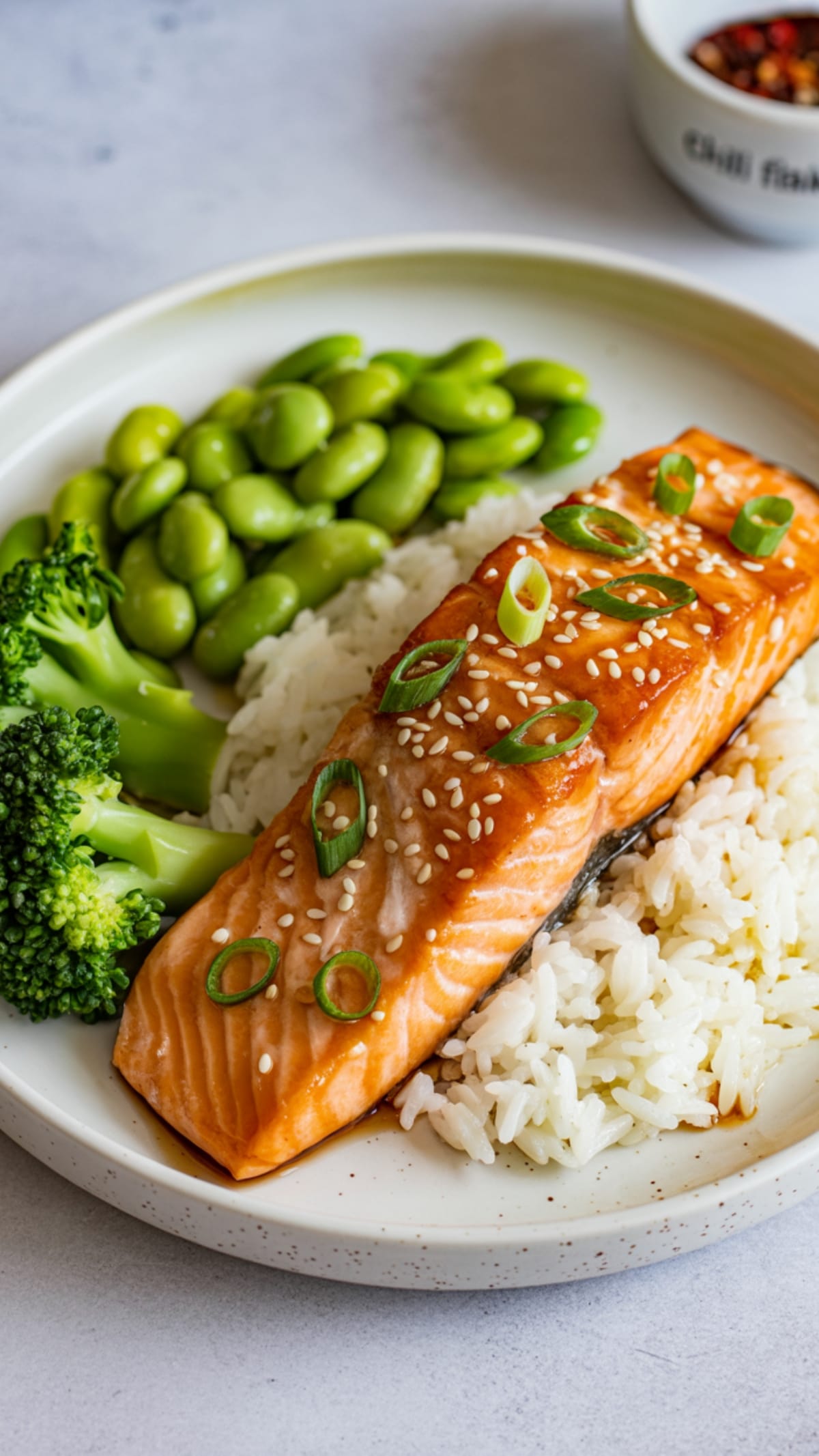
- Calories: Approximately 350 calories per serving
- Protein: 34g per serving
- Fat: 18g per serving (mostly heart-healthy omega-3s)
- Carbohydrates: 14g per serving
- Sodium: 780mg per serving (less if using low-sodium soy sauce)
- Allergens: Fish, soy
- Diet compatibility: Gluten-free (if using gluten-free soy sauce), dairy-free, nut-free
Common Mistakes to Avoid
- Overcooking the salmon – Salmon continues cooking after you remove it from heat. Take it out when it reaches 125°F (52°C) for medium-rare or 130°F (54°C) for medium.
- Using cold salmon straight from the refrigerator – This causes uneven cooking. Let it sit at room temperature for 15 minutes before baking.
- Not patting the salmon dry – Moisture prevents proper caramelization of the teriyaki glaze.
- Skipping the thickening step – Without thickening, the sauce will be too thin to create that beautiful glaze that clings to the salmon.
- Basting only once – Multiple applications of the sauce during cooking creates those beautiful layers of flavor and caramelization.
Alternatives & Substitutions
- No mirin? Use dry white wine or rice vinegar with a touch more sugar to achieve a similar flavor profile.
- For a gluten-free version: Use tamari or certified gluten-free soy sauce instead of regular soy sauce.
- Honey or maple syrup can replace brown sugar for a different dimension of sweetness.
- For a spicier version: Add sriracha or more red pepper flakes to the sauce.
- Don’t have fresh ginger? Use 1 teaspoon of ground ginger, though the flavor won’t be quite as bright.
- Other fish options: This sauce works well with other firm fish like cod, trout, or mahi-mahi (adjust cooking times accordingly).
- For a lighter version: Reduce the sugar by half and use a bit more ginger and garlic for flavor.
FAQs
Can I prepare this teriyaki salmon in advance?
You can prepare the teriyaki sauce up to 3 days ahead and store it in the refrigerator. I don’t recommend marinating the salmon for more than 30 minutes as the acid in the sauce can start to “cook” the fish, affecting its texture.
How do I know when my salmon is perfectly cooked?
Perfectly cooked salmon should flake easily with a fork but still maintain a slightly translucent center. For medium doneness, the internal temperature should reach 130°F (54°C). Remember that salmon will continue cooking a bit after you take it out of the oven.
Can I use frozen salmon for this recipe?
Yes, but thaw it completely in the refrigerator overnight and pat it very dry before cooking. Frozen-then-thawed salmon tends to release more moisture, so you might want to let it sit uncovered in the refrigerator for an hour after thawing to dry the surface.
What sides pair well with Baked Teriyaki Salmon?
Classic pairings include steamed jasmine rice and stir-fried vegetables. For something lighter, try cucumber salad or steamed bok choy. Soba or udon noodles also complement the teriyaki flavors beautifully.
Can I grill this salmon instead of baking it?
Absolutely! Preheat your grill to medium-high, oil the grates well, and start with the skin side down. Brush with sauce throughout cooking, about 4-5 minutes per side depending on thickness. The caramelization from grilling adds a wonderful smoky element.
Is this recipe keto-friendly?
Traditional teriyaki sauce isn’t keto-friendly due to the sugar content. For a keto version, replace the brown sugar with a brown sugar substitute and use less mirin or replace it with dry white wine plus a keto-friendly sweetener.
Final Thoughts
Baked Teriyaki Salmon exemplifies how simple ingredients can transform into something truly special. The balance of sweet and savory flavors, the glossy caramelized exterior, and the tender, flaky fish create a dish that feels like a culinary achievement yet requires minimal effort. Whether you’re cooking for yourself or hosting a dinner party, this recipe delivers that perfect combination of impressive presentation and satisfying flavor that keeps everyone coming back for more.





